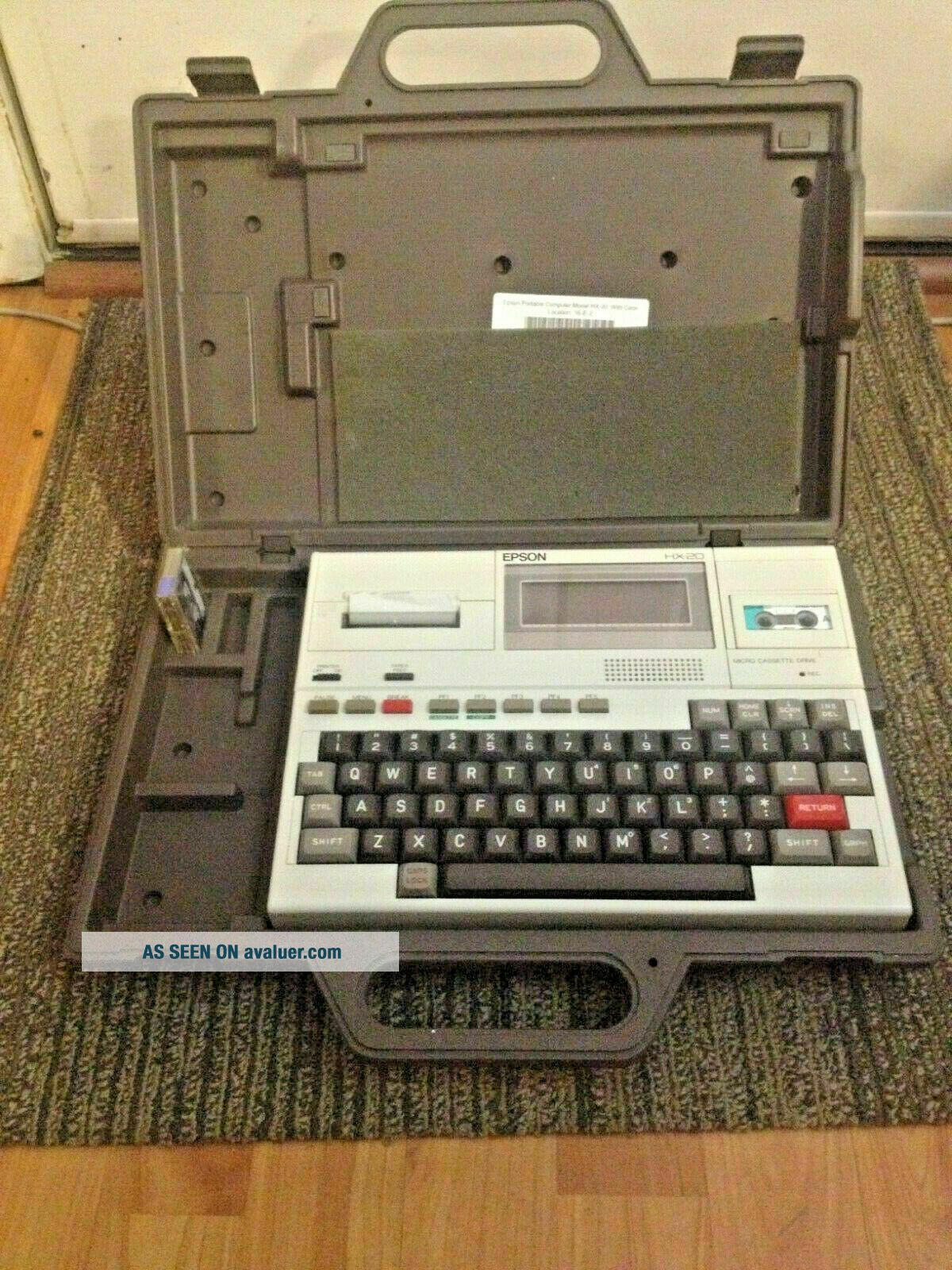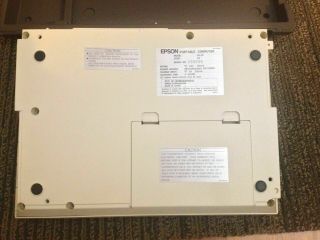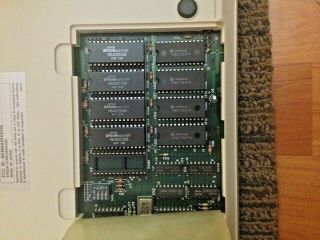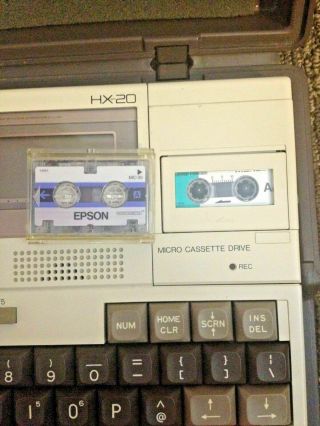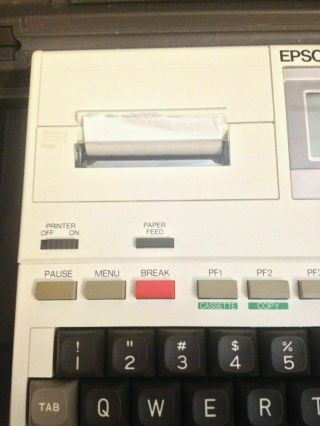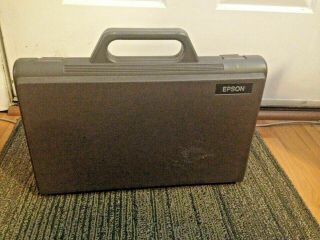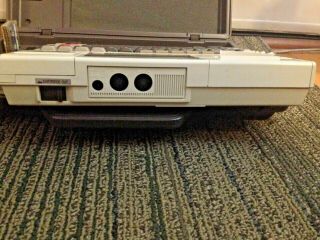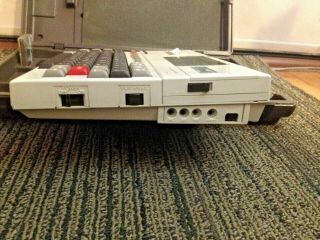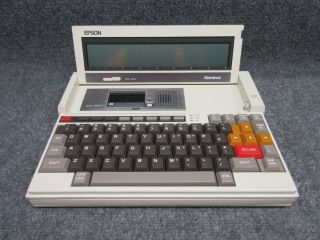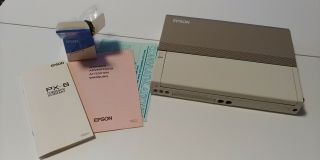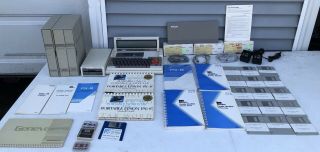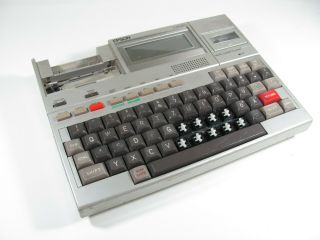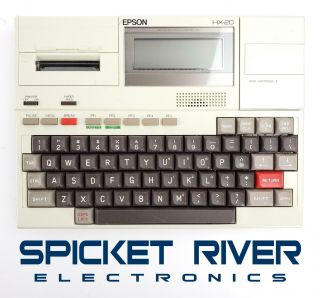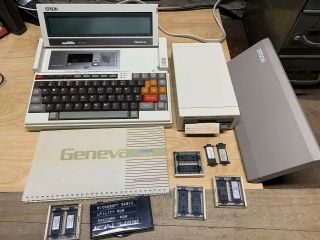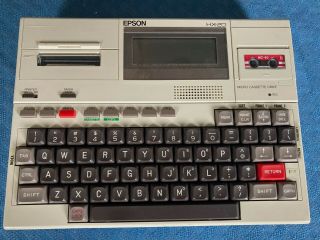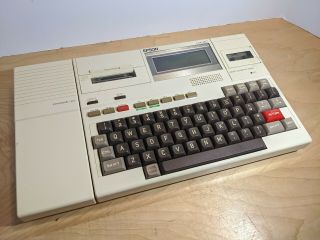Vintage Epson Hc - 20 Portable Computer With Case And Tape Drive
Item History & Price
| Reference Number: Avaluer:6941936 | Model: HC-20 |
| Type: Laptop | Country/Region of Manufacture: Japan |
| Brand: Epson |
Epson advertised the HC-20 with a photograph of the computer on two facing magazine pages with the headline "Actual size".[7] With about the footprint of an A4 size page, the Epson HX-20 features a full-transit keyboard, rechargeable nickel-cadmium batteries, a built-in 120 × 32-pixel LCD which allowed 4 lines of 20 characters, a calculator-size dot-matrix printer, the EPSON BASIC programming language, two Hitachi 6301 CPUs at 614 kHz[8] which is essentially an enhanced Motorola 6801,... [9] 16 kB RAM expandable to 32 kB, two RS-232 ports at a maximum of 4800 bits/s for the first 8-pin DIN connector intended for modem or serial printer with the second port capable of 38, 400 bits/s using a 5-pin DIN connector which was mainly for use with external floppy drive and video display[8] an early concept of docking station, a 300 bit/s acoustic coupler was available, [8] built-in microcassette drive, barcode reader connector.[8] Uses a proprietary operating system, which consists of the EPSON BASIC interpreter and a monitor program, and weighs approximately 1.6 kg. Known colours of the machine are silver and cream, while some prototypes were dark grey. The HX-20 was supplied with a grey or brown carry case. An external acoustic coupler, the CX-20, was available for the HX-20, as was an external floppy disk drive, the TF-20, and an external speech synthesis Augmentative Communication Device (ACD), ‘RealVoice’. Another extension was the serially connected 40 × 24 character video. It used a special protocol, EPSP, [10] which was also used by the external floppy disk drive.The battery life of the HC-20 was approximately 50 hours running BASIC and less using the microcassette, printer or RS-232.[8] Data integrity could be preserved in the 4.0 - 6.0 V range.[8] The power supply was rated for 8 W.[8] Operating and charging it would tolerate 5 - 35 °C.[8] Data integrity could be preserved at -5 - 40 °C.[8] The HX-20 could be stored between -20 - 60 °C.[8]The later, more popular TRS-80 Model 100 line, designed by Kyocera, owed much to the design of the HX-20.ReceptionBYTE in September 1983 wrote that the HC-20, available in the United States for about a year, had been unsuccessful because of the lack of software or accessories. The review noted that Epson had included the formerly $160 microcassette drive in the standard $795 configuration, as well as bundling a simple word processor. BYTE praised the printer as "nothing short of amazing", but criticized the lack of an operating system for cassette storage and said that compared to the TRS-80 Model 100's display, "the HX-20 looks primitive".[11]LCDThe LCD is 120×32 pixels and is controlled by six µPD7227 LCD controller ICs each responsible for 40×16 pixels of the LCD. The µPD7227 uses a serial protocol and has two memory banks for switching between rows 0-7 and 8-15. It features multiple modes, including "Write", "Read", "AND", "OR" and "Character". The "character" mode draws characters from a built-in character map.Each bank is 40 bytes with bit 6 of the address determining the bank and even though the address can be up to 127, nothing will happen when trying to access data outside the banks. If the pointer action in a command is set to decrement and the pointer is at 0, the pointer will wrap to 127.Monitor Monitor entered via a trapThe Monitor program can be accessed via the main menu on startup by pressing 1, by typing the command "MON" in BASIC or by causing a trap, i.e. writing/reading to/from protected addresses or executing an illegal instruction.In the case of a trap, "Trap!" will be displayed in the Monitor and the user can use it for debugging.When entering Monitor it shows a prompt on the first line, "Trap!" on the second line (if entered via a trap) and the CPU registers on the third and fourth lines as they were right before the Monitor was entered. These registers are A (Accumulator A), B (Accumulator B), X (Index Register), C (Condition Code Register), S (Stack Pointer) and P (Program Counter).Monitor can be used for reading and writing memory, modifying CPU registers, running code at specific addresses in memory, saving/loading memory to/from a plugin option, etc. This is very useful for debugging programs written in machine code in difference to programs written in the EPSON BASIC programming language.
Also see
https://en.wikipedia.org/wiki/Epson_HX-20
Also see
https://en.wikipedia.org/wiki/Epson_HX-20



